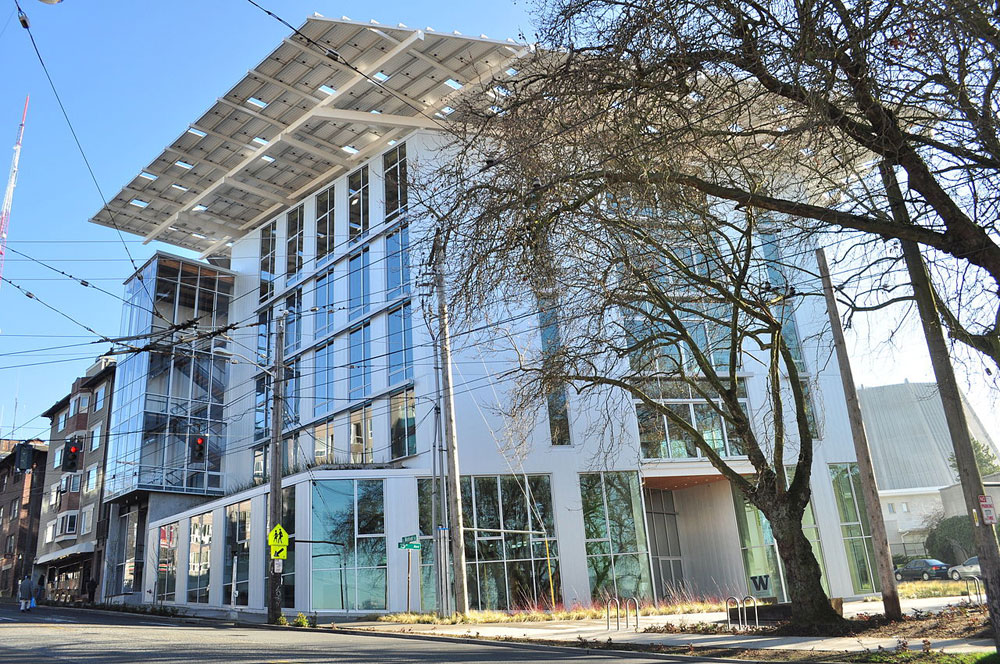
June 10, 2019; Seattle Times
The Bullitt Foundation, a Seattle-based funder of environmental nonprofits, has announced it will make its final grants by 2024. After 2024, the foundation will continue to manage the Bullitt Center, its six-story, 45,0000-square-foot, sustainably designed office building, providing office space to regional environmental groups in perpetuity at a reduced rate. (NPQ reported on the plans for the building back in 2011.)
Before we go any further, however, we would like to reintroduce readers to an excellent article by Buzz Schmidt on how to determine the best lifespan of your foundation. In it, he suggests this decision depends both on strategy and values. Does what is spent now matter more to the issue you are trying to affect than what might be spent ten years from now? These questions, of course, are tailor-made for environmental funders, as we move from calling the problem “global warming” to “global heating.”
As Hal Bernton and Evan Bush report for the Seattle Times, the Bullitt Foundation has funneled over $200 million to environmental groups in the Pacific Northwest over the last 27 years. The foundation originally planned to spend down its assets over 10 years, but its investments enabled the foundation to continue its work far longer than expected, according to its website.
While the foundation funded the Northwest more broadly in the past, it currently funds projects in an area it calls the “emerald corridor,” a region stretching from Vancouver, BC, to Portland, Oregon, and to the Cascade Range in the east. The foundation focuses on sustainable development with grantmaking programs in regional ecosystem health, energy and climate, and “deep green buildings.” It has worked to conserve lands—including the Hanford Reach National Monument in Washington and the Cascade Siskiyou National Monument in Oregon—lessen reliance on fossil fuels, and test ideas in housing and agriculture.
Sign up for our free newsletters
Subscribe to NPQ's newsletters to have our top stories delivered directly to your inbox.
By signing up, you agree to our privacy policy and terms of use, and to receive messages from NPQ and our partners.
Bernton and Bush report that the foundation’s grants “typically range from $40,000 to $120,000, often seed money for groups that, once they passed muster with the Bullitt Foundation, had an easier time persuading other donors to chip in.” The foundation is led by Denis Hayes, an original organizer of the first Earth Day in 1970. Hayes, 74, joined the foundation in 1992.
Hayes’ leadership is the reason, according to Bernton and Bush, that the relatively small foundation, estimated to have less than $82 million in assets in 2017, was able to have a big impact on the regional environmental movement.
Quoted in the Seattle Times, Hayes said, “I would say 90 percent-plus of our grants have been designed to influence policy. As a nonprofit, we cannot make a grant to hire a lobbyist or influence legislation…but all the policy development is fair game to us.”
The Bullitt Foundation was started by Dorothy Bullitt, the daughter of C.D. Stimson, one of the founders of Stimson Lumber Company, which harvested old-growth timber. Bullitt was also a businesswoman, starting King Broadcasting in Seattle. Proceeds from the sale of the company after her death grew the foundation’s endowment significantly.
The foundation had an environmental focus from the start. Quoted in a 1977 interview in the Seattle Times, Bullitt said, “It’s what we were interested in as a family.”—Catherine Jones













